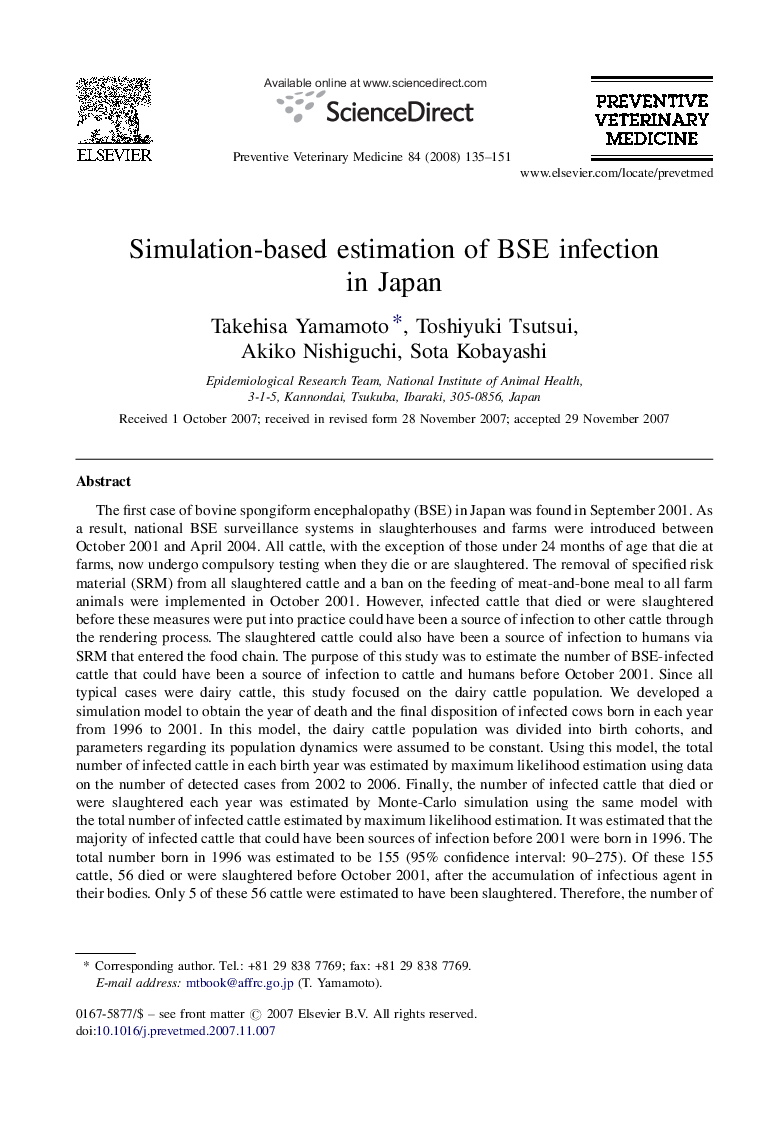| Article ID | Journal | Published Year | Pages | File Type |
|---|---|---|---|---|
| 2453387 | Preventive Veterinary Medicine | 2008 | 17 Pages |
The first case of bovine spongiform encephalopathy (BSE) in Japan was found in September 2001. As a result, national BSE surveillance systems in slaughterhouses and farms were introduced between October 2001 and April 2004. All cattle, with the exception of those under 24 months of age that die at farms, now undergo compulsory testing when they die or are slaughtered. The removal of specified risk material (SRM) from all slaughtered cattle and a ban on the feeding of meat-and-bone meal to all farm animals were implemented in October 2001. However, infected cattle that died or were slaughtered before these measures were put into practice could have been a source of infection to other cattle through the rendering process. The slaughtered cattle could also have been a source of infection to humans via SRM that entered the food chain. The purpose of this study was to estimate the number of BSE-infected cattle that could have been a source of infection to cattle and humans before October 2001. Since all typical cases were dairy cattle, this study focused on the dairy cattle population. We developed a simulation model to obtain the year of death and the final disposition of infected cows born in each year from 1996 to 2001. In this model, the dairy cattle population was divided into birth cohorts, and parameters regarding its population dynamics were assumed to be constant. Using this model, the total number of infected cattle in each birth year was estimated by maximum likelihood estimation using data on the number of detected cases from 2002 to 2006. Finally, the number of infected cattle that died or were slaughtered each year was estimated by Monte-Carlo simulation using the same model with the total number of infected cattle estimated by maximum likelihood estimation. It was estimated that the majority of infected cattle that could have been sources of infection before 2001 were born in 1996. The total number born in 1996 was estimated to be 155 (95% confidence interval: 90–275). Of these 155 cattle, 56 died or were slaughtered before October 2001, after the accumulation of infectious agent in their bodies. Only 5 of these 56 cattle were estimated to have been slaughtered. Therefore, the number of infected cattle that could have served as a source of human infection would appear to have been a very limited subset of the BSE-infected cattle in Japan.
